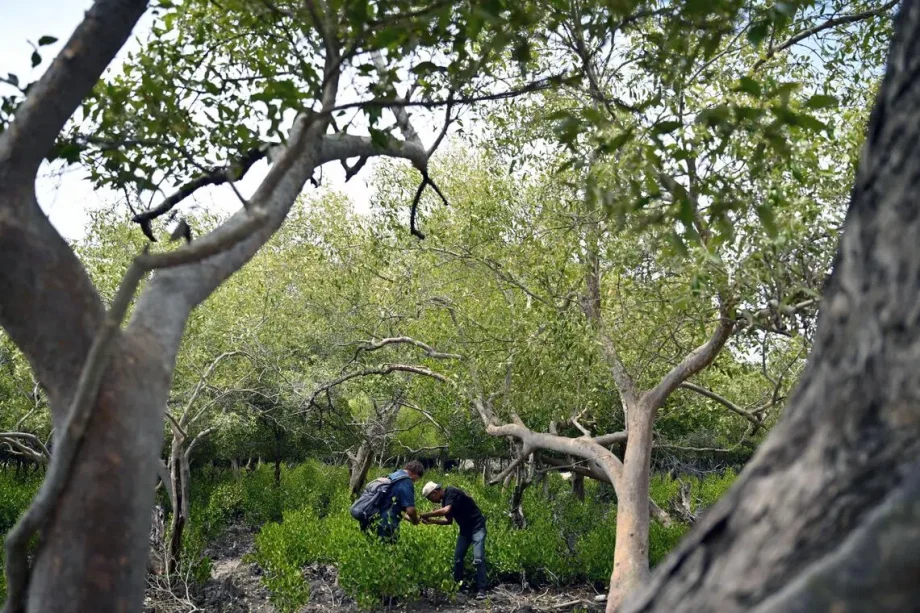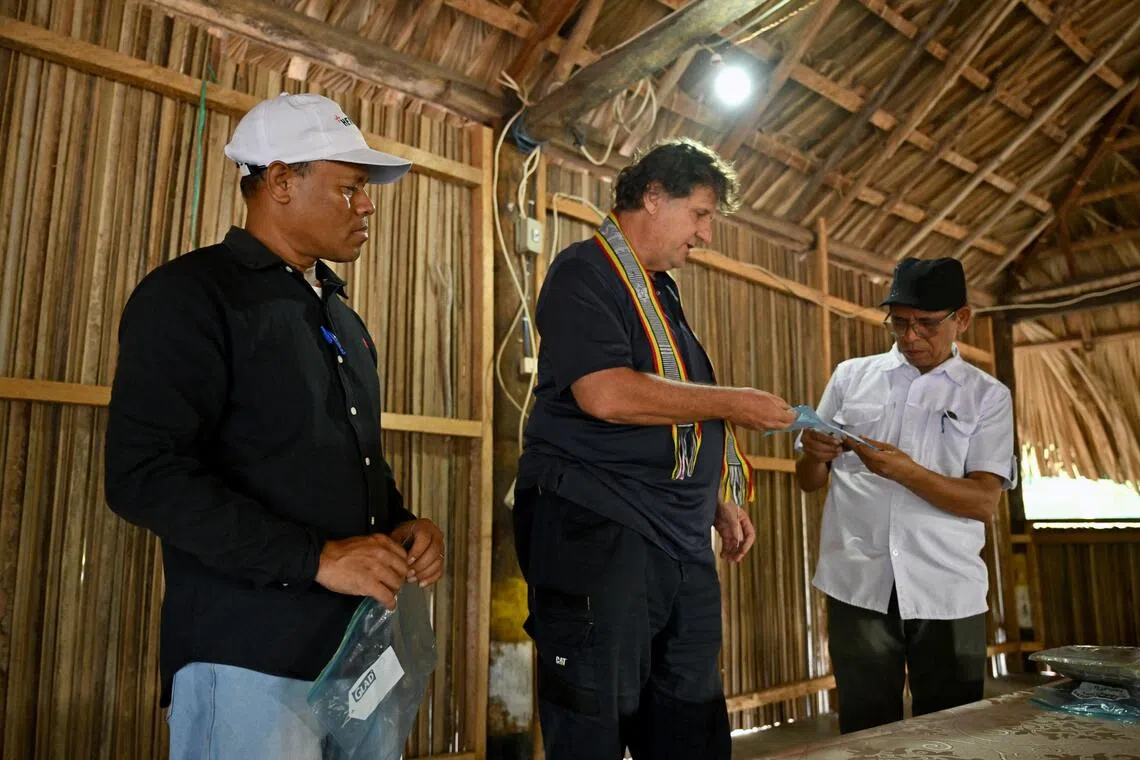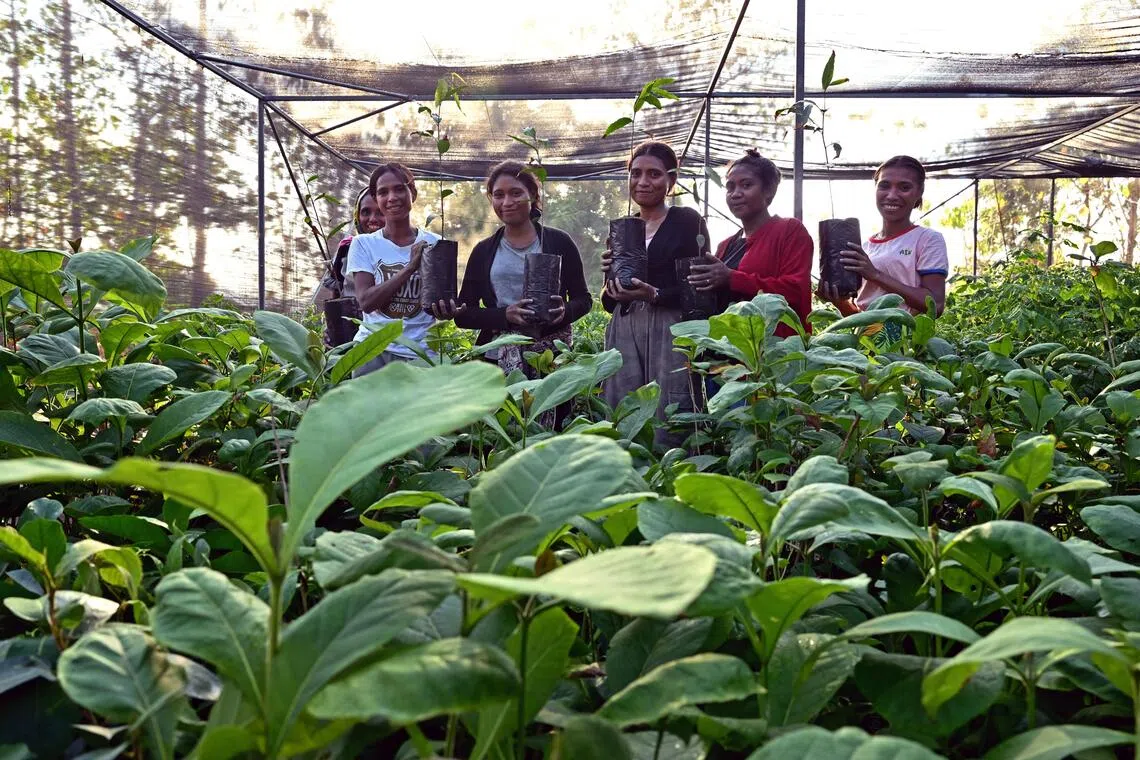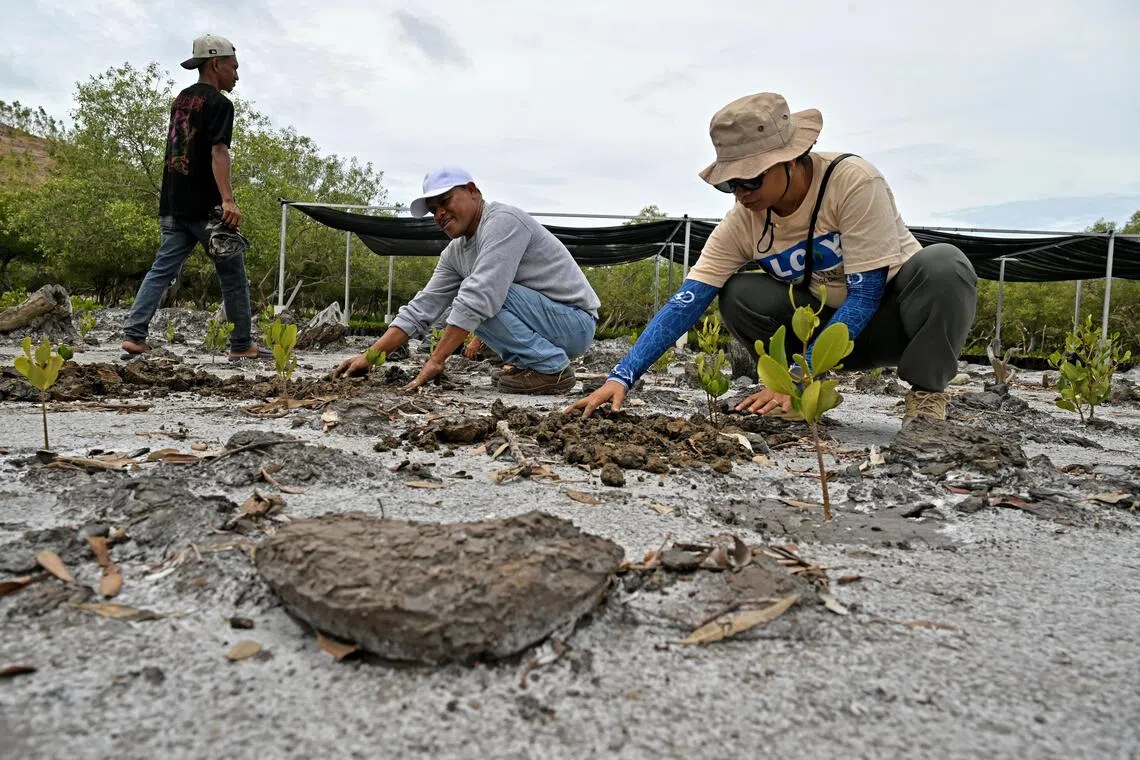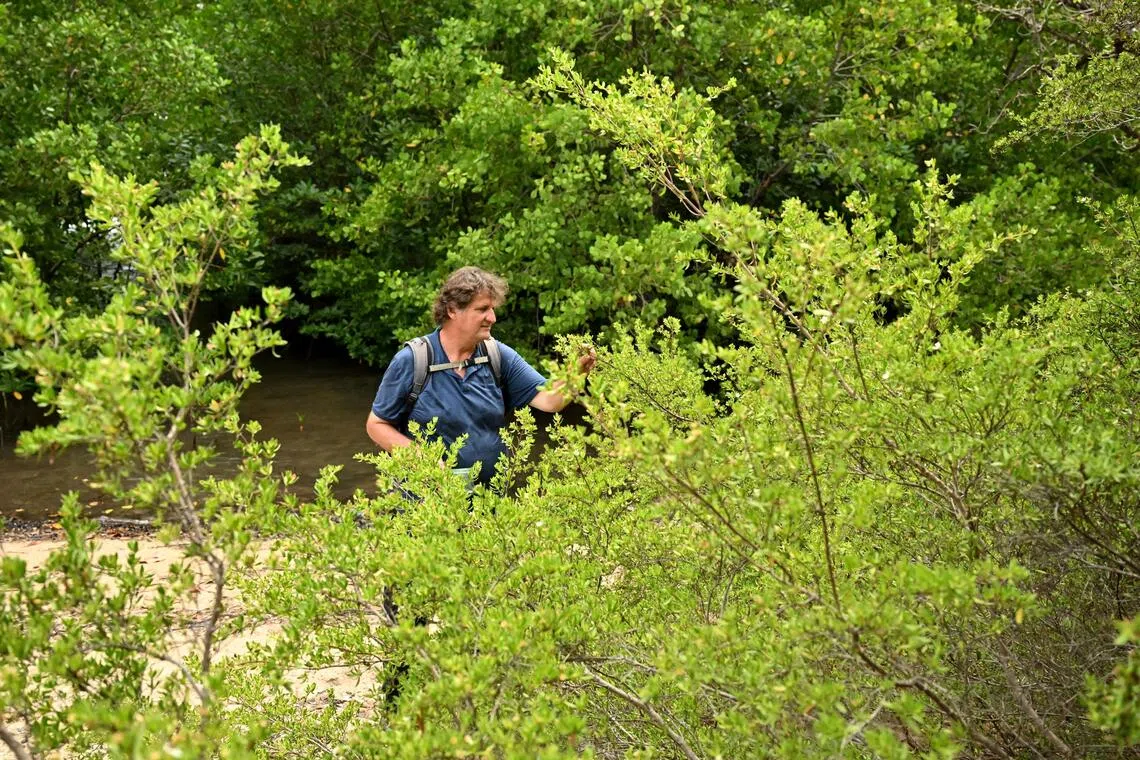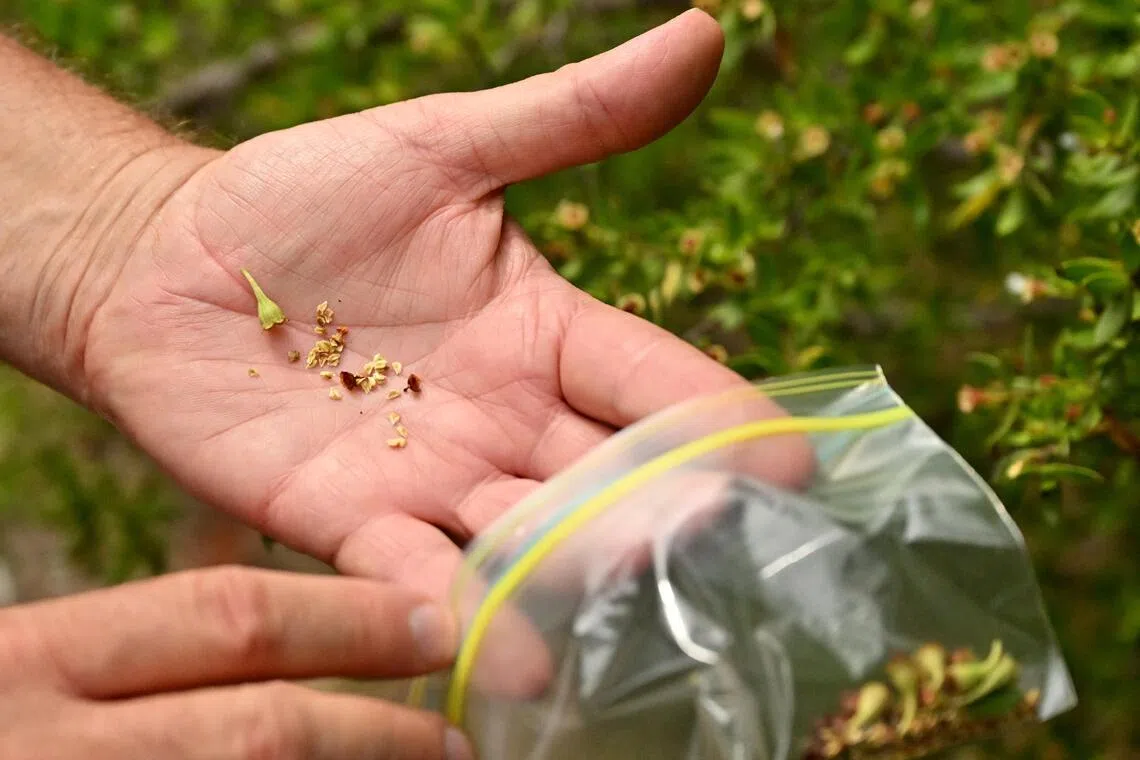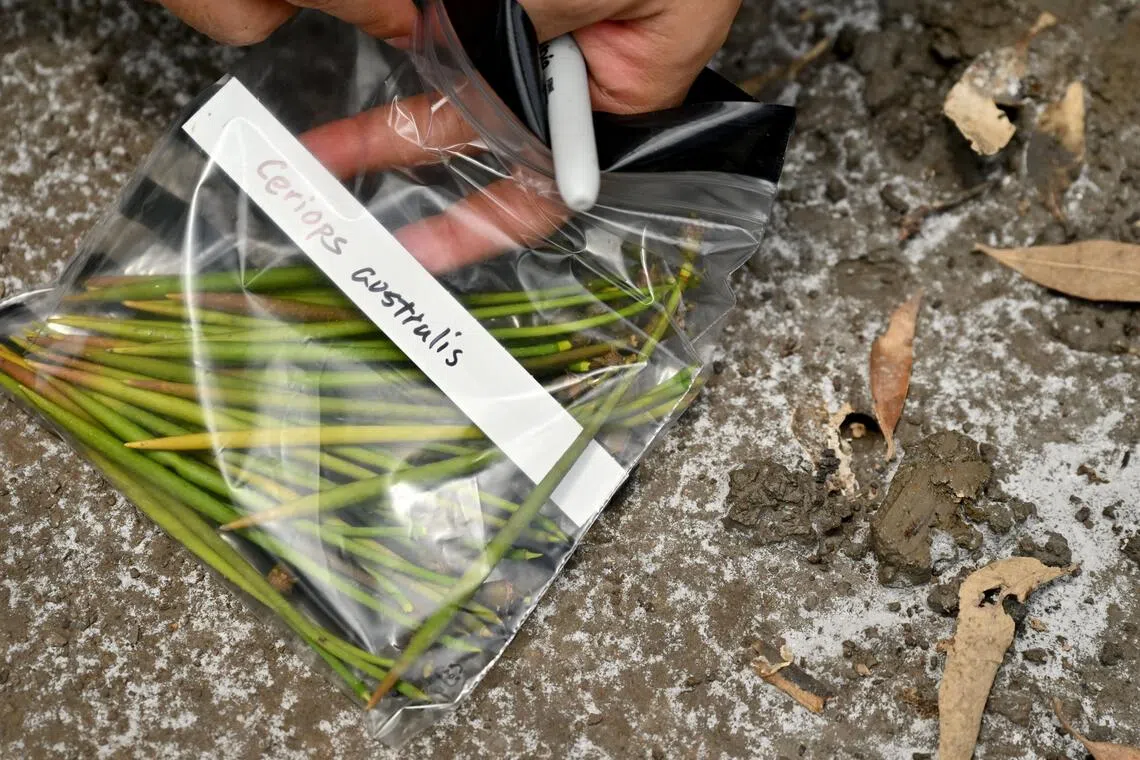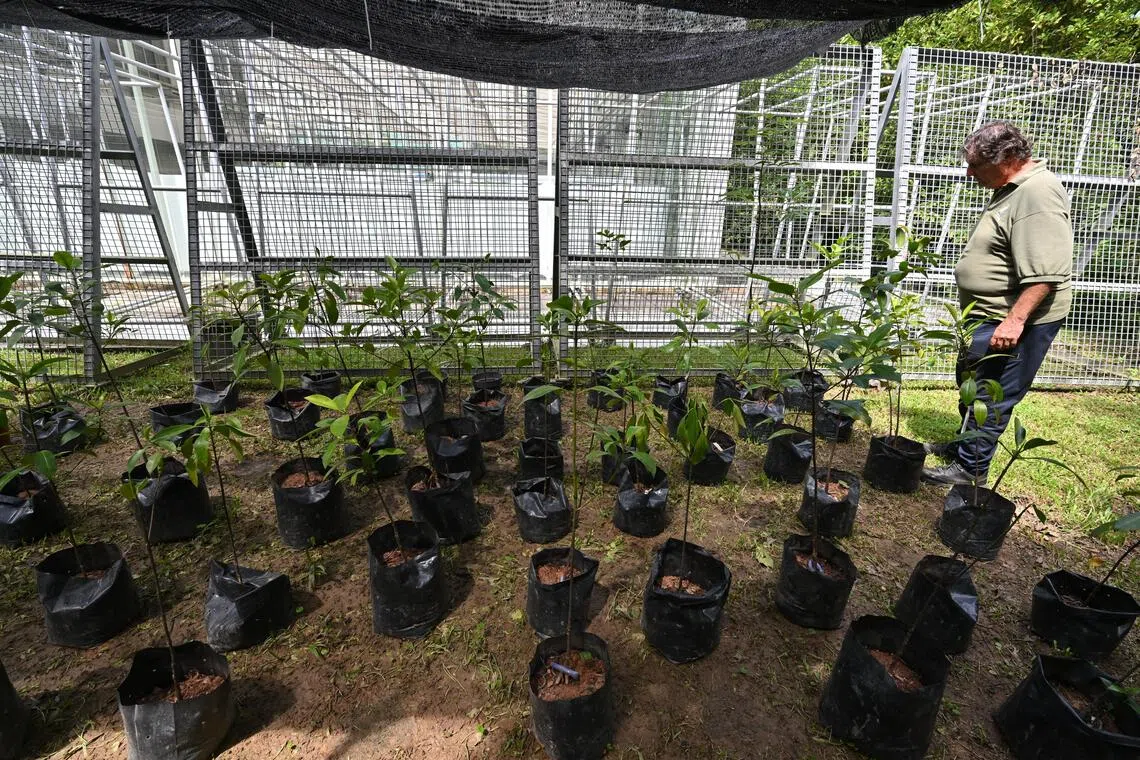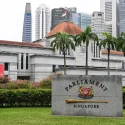DILI, Timor Leste – When Bay East Garden at Gardens by the Bay opens in 2027, around a tenth of the estimated 100 mangrove plants
in its 5,148 sq m wetland habitat
could come from Timor-Leste and be planted in their new home by members of the public.
The plants from Timor-Leste include the smooth-fruited yellow mangrove (Ceriops australis), a mangrove species that can grow up to 10m tall and is not currently found in Singapore.
Handpicked propagules of this species, collected on Oct 18 from an area called Hera on Timor-Leste’s northern coast, about 12km from its capital Dili, were transported to Singapore on Oct 19 by a team from Gardens by the Bay.
In Gardens by the Bay’s own back-of-house nursery, horticulturists will propagate the propagules alongside other mangrove species that have been gathered for Bay East Garden from Pasir Ris Park since July.
Having plants from Timor-Leste in Bay East Garden was made possible by a memorandum of understanding (MOU) between Gardens by the Bay and the Timorese Ministry of Agriculture, Livestock, Fisheries and Forestry that was inked on Oct 17 in Dili.
The three-year agreement covers areas such as plant exchange, training and technical exchanges, and public education activities that promote appreciation and conservation of biodiversity.
Gardens by the Bay will also provide technical support for the planning, design, development and management of the Botanical Garden Francisco Xavier do Amaral, which was launched in 2016 but has yet to take off.
Timor-Leste has a land area of about 14,800 sq km, and Agriculture, Livestock, Fisheries and Forestry Minister Marcos da Cruz said after the MOU signing that while about 60 per cent of this is categorised as forested areas, it is lacking in dense forest cover.
Mr Adelino Rojario, chief of Timor-Leste’s Department of Reforestation, said later during a media tour of a government nursery that the country loses about 1.7 per cent – or more than 14,000ha – of its forest cover to deforestation per year due to factors such as illegal logging, forest fires, settlement construction, animal grazing, and slash-and-burn farming.
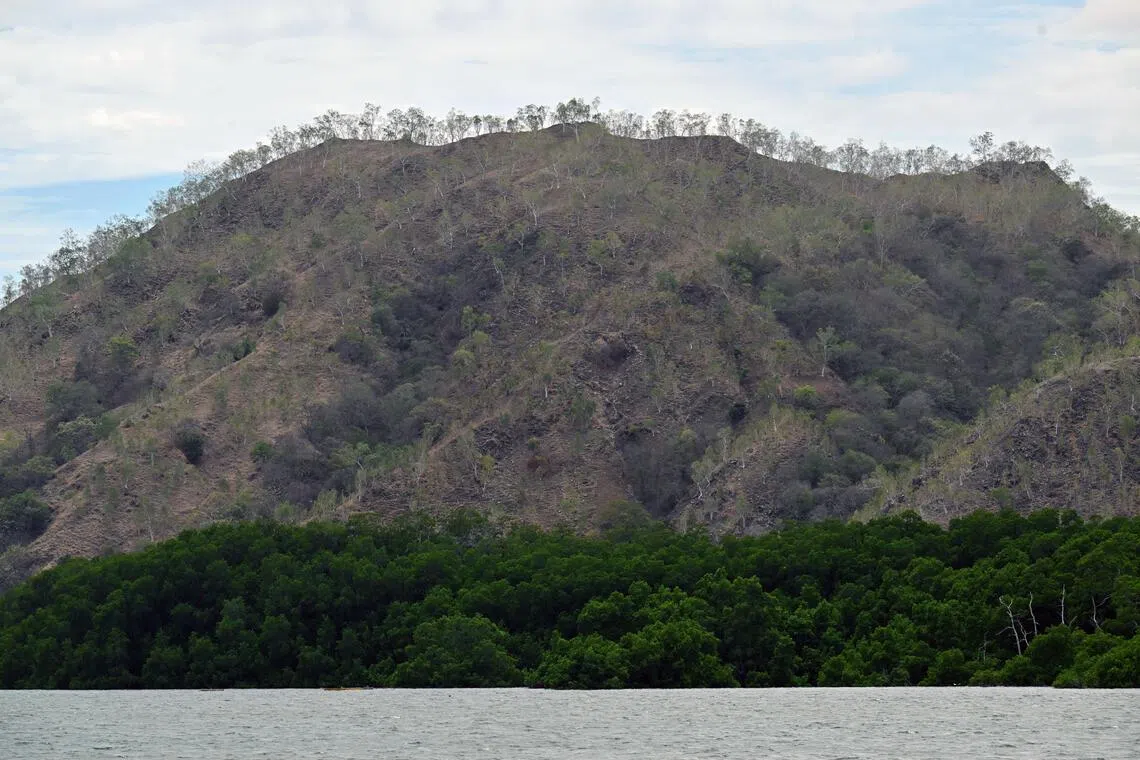
Timor-Leste loses about 1.7 per cent of its forested areas per year.
ST PHOTO: DESMOND FOO
Gardens by the Bay is contributing to the country’s reforestation efforts by providing seeds that will be propagated in a government nursery and subsequently planted in the country at various sites, either directly by the government or by community groups.
For instance, during a plant-sourcing trip in August, Gardens by the Bay staff took with them seeds of a yellow-leaved variant of the Dendrolobium umbellatum that was first discovered in Vanuatu.
These seeds were planted on Sept 12, and had sprouted by the time Gardens by the Bay staff made a return visit to the nursery on Oct 17.
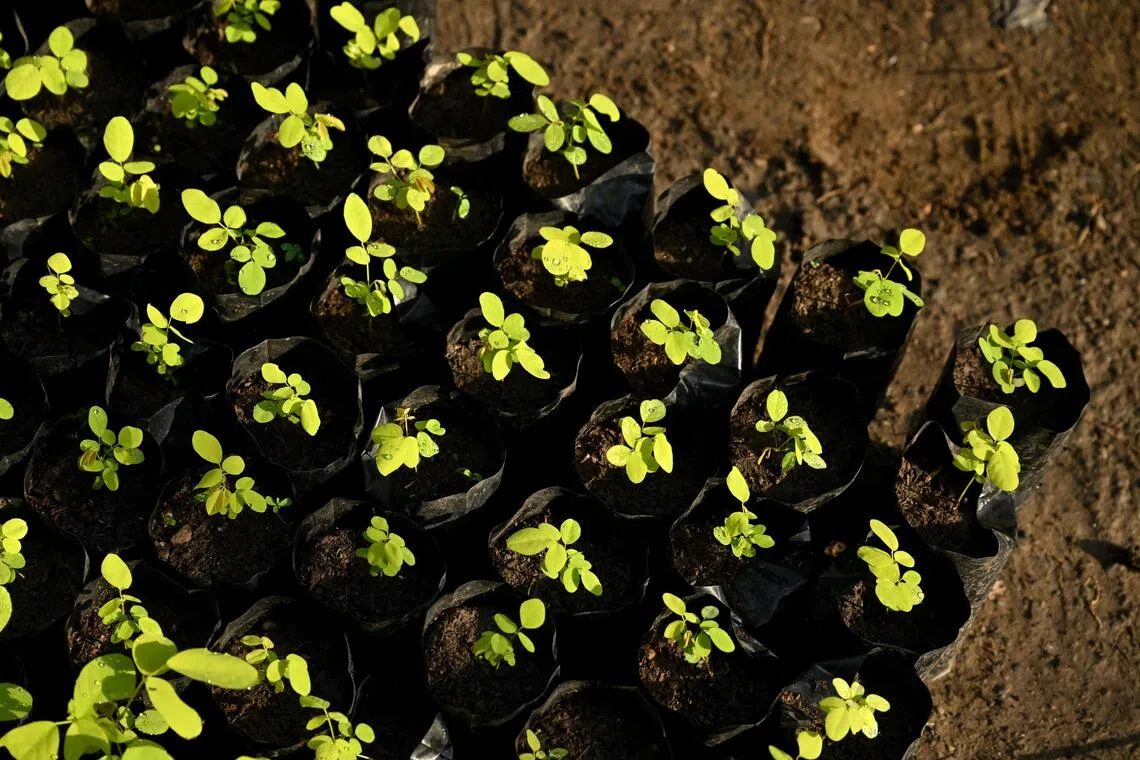
Dendrolobium umbellatum “Vanuatu” seedlings seen in a government nursery in Maubara, Timor-Leste, on Oct 17.
ST PHOTO: DESMOND FOO

